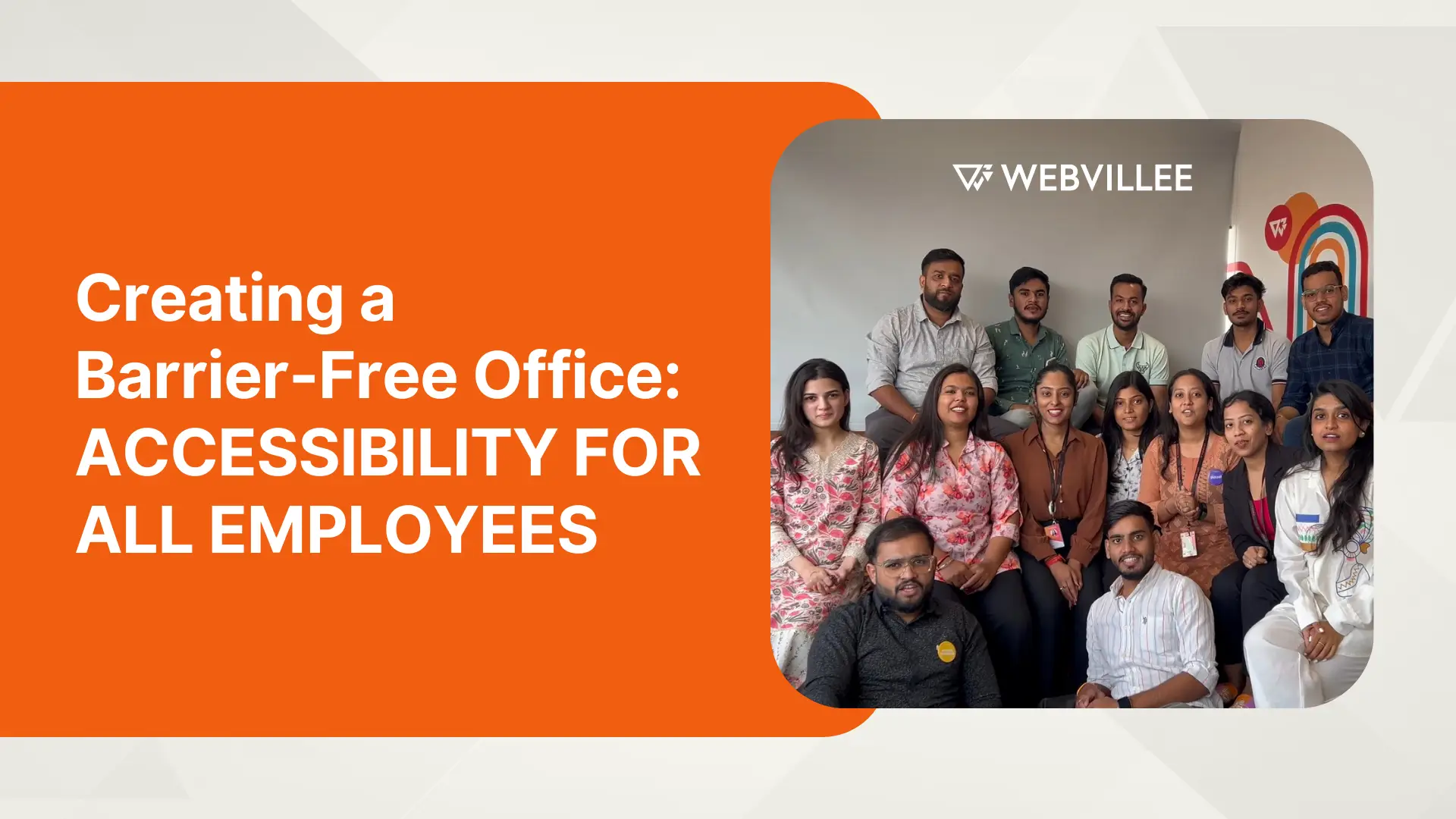Workplace design directly affects how well employees perform their work – a fact many organizations fail to notice. Building accessibility for everyone means more than just following rules. The goal is to create a space where team members can give their best, whatever their physical or cognitive needs.
True workplace inclusion extends beyond simple accommodations. Companies that weave diversity and inclusion into their office design create spaces that enhance productivity. These environments make employees happier and draw talented individuals from all walks of life. This detailed guide shows practical ways to turn any office into a space without barriers that serve everyone well.
You’ll learn key strategies to make workplaces more accessible. The process starts with employee feedback and leads to expandable solutions that evolve with your organization. This piece will help you build an office where every employee feels valued and ready to succeed.
Employee-Centric Accessibility Planning
A workplace becomes truly accessible when you understand what each employee needs. Companies that let their employees shape accessibility plans create better environments that work for everyone.
At Webvillee, we are dedicated to gathering feedback from all employees to ensure our office spaces and work processes meet the needs of diverse individuals. As part of our inclusion strategy, we are increasing engagement with employees from underrepresented groups (URGs) to understand their unique challenges.
We aim to achieve a workplace where all voices are heard and considered in shaping accessibility. Our goal is to have over 50% representation from diverse and underrepresented communities in our teams.
Gathering Employee Feedback
Building an accessible workplace needs constant communication with employees. Companies can learn about accessibility needs through:
- Regular accessibility surveys and pulse checks
- One-on-one discussions with team members
- Employee resource groups and committees
- Anonymous feedback channels
- Stay interviews with current employees
At Webvillee, we conduct regular surveys and encourage open dialogue to understand the needs of our diverse workforce.
As we work to ensure 51%+ representation from diverse groups, we actively listen to feedback from underrepresented employees, ensuring that their voices are integral to our accessibility planning.
Identifying Diverse Needs
You need to understand the complete range of employee needs to build spaces that welcome everyone. Organizations must consider both visible and invisible disabilities. Nearly 10% of Americans have non-visible disabilities that affect their work life. This means looking at mobility needs, sensory sensitivities, and cognitive requirements.
Our organization considers both visible and invisible disabilities as part of our ongoing commitment to diversity and accessibility. By including underrepresented groups in our planning, we are working to achieve our goal of having a more inclusive environment where our workforce represents diverse backgrounds, including disabilities and other underrepresented identities.
Tailored Accommodation Strategies
Good accommodation strategies should focus on three vital principles: dignity, individualization, and inclusion. Each employee’s situation is different and needs individual assessment that protects their privacy and independence. Companies should create flexible work setups that change with evolving needs.
The best accommodation strategies change workplace conditions without highlighting individual employees. These changes might include flexible schedules, ergonomic equipment, or different workspace layouts. The goal lets employees work efficiently while staying comfortable and independent.
Companies should write down their accommodation policies and share them clearly with the team. They need clear steps to request accommodations and schedule regular reviews. This ensures solutions stay useful as needs change.
Our Organization tailors accommodations to meet the specific needs of our diverse team members. We are working towards providing more flexible schedules and ergonomic equipment for everyone, with a particular focus on employees from underrepresented groups to ensure that all our team members can succeed and feel valued in the workplace.
Building an Inclusive Workplace Culture
Building an inclusive workplace culture needs more than just physical changes—it requires a fundamental change in how organizations think and behave. Companies should encourage an environment where accessibility becomes part of their core values.
Disability Awareness Training
Disability awareness training is the lifeblood of an inclusive workplace culture. Companies should create complete training programs that go beyond simple compliance. These programs need to focus on practical scenarios and real-life applications that help employees learn how to support colleagues with different abilities.
Regular interactive training should include role-playing exercises and group discussions. Employees develop genuine empathy and understanding through this approach instead of just following rules.
Breaking stigma and Misconceptions
Workplace misconceptions about disabilities create hidden barriers to inclusion. Here are key myths we need to address:
- People with disabilities need constant assistance
- Accommodations cost too much to implement
- Employees with disabilities don’t work as well
- Disabilities affect all work performance
- Special treatment matters more than equal chances
At Webvillee, we are actively working to break these myths, ensuring that all employees, including those from underrepresented groups, have equal opportunities and that accessibility is seen as a long-term benefit rather than a burden.
Promoting Inclusive Communication
Clear and effective communication builds the foundation for workplace inclusion. Companies should create communication guidelines that respect different needs. Guidelines should use plain language, offer multiple formats for important information, and give all team members equal chances to speak in meetings.
Leaders make a significant impact when they model inclusive communication. They should show active listening skills and welcome open discussions about accessibility needs. Teams can identify communication barriers and develop better solutions through regular feedback sessions.
Organizations create an environment where employees feel valued when they celebrate diversity and inclusion. This cultural change needs steady effort and dedication from everyone.
Our company communication guidelines are evolving to be more accessible, ensuring we reach all employees, including underrepresented groups, in ways that empower them to fully engage with the workplace.
How To Facilitate Cross-Departmental Collaboration?
Workplace accessibility works best when departments coordinate smoothly. Each team brings its own expertise to help create an environment where employees thrive. The success of these initiatives depends on departments working together to put inclusive solutions in place.
At Webvillee, our HR, IT, and facilities management teams are working closely together to ensure that every department contributes to our accessibility and diversity goals. We aim for 51%+ representation from underrepresented groups in leadership positions, ensuring diverse perspectives help shape the workplace.
HR and facilities coordination
Human Resources teams must partner with facilities management to create spaces that work for everyone. HR explains what employees need, and facilities teams make the physical changes happen. Their combined efforts ensure:
- Workplace changes match employee feedback
- Space planning works for the needs of all types
- Teams conduct accessibility checks regularly
- Emergency plans include every employee
- Equipment and furniture meet ergonomic standards
IT department involvement
The IT department shapes digital accessibility solutions that complement physical changes. Their work goes beyond simple technical support. They implement assistive technologies that let employees work productively. IT teams make sure workplace technology works with assistive devices and digital platforms meet accessibility standards.
Management support systems
Management Support Systems (MSS) create a framework to track and enhance accessibility projects. Leaders use these systems to monitor progress, make smart decisions, and roll out accessibility measures consistently. Effective management systems help with:
Performance tracking and resource planning Strategic decisions and future planning Data storage and team communication Immediate tracking of accessibility upgrades.
These systems succeed when department heads communicate with their teams regularly. Leaders must add accessibility metrics to performance reviews and encourage departments to share knowledge and resources.
Strong relationships between departments and clear communication channels create a unified approach to workplace accessibility. This shared environment gives accessibility projects the attention they deserve and builds an inclusive culture throughout the organization.
How To Maintain Long-Term Accessibility In A Work Place?
A systematic approach and long-term dedication will keep workplace accessibility on track. Your organization needs resilient systems that will give a sustainable framework. These systems should adapt to changing needs.
Regular Accessibility Audits
Your organization should complete full accessibility audits every 6-12 months to assess the workplace environment. These assessments help you spot areas needing improvement and maintain compliance with current standards. A good audit should get into:
- Physical infrastructure and workspace layout
- Digital tools and technology systems
- Communication protocols and practices
- Emergency response procedures
- Employee feedback and satisfaction levels
Updating Policies and Procedures
Policy alignment is a vital part of keeping accessibility initiatives strong. Your team must review and update accessibility policies to match current best practices and legal requirements. The policy update process works best with these steps:
- Review existing policies against current standards
- Incorporate feedback from employee experiences
- Update documentation and communication materials
- Train staff on new procedures
- Monitor implementation effectiveness
How To Create Continuous Improvement Processes?
Organizations need to welcome a culture of continuous improvement to create lasting accessibility. Set clear success metrics and measure progress against your goals regularly. Performance monitoring should track both numbers and quality indicators that show how well accessibility measures work.
Remember that accessibility isn’t a fixed target – it evolves constantly. Regular feedback from employees helps you spot new needs and ways to improve. This ongoing conversation keeps accessibility measures relevant and effective.
Your success in maintaining accessibility long-term depends on accountability at every level. Department heads should track and report accessibility metrics. Team leaders make sure accessibility practices work daily. This methodical approach helps organizations build an adaptable framework that grows with them.
At Webvillee, we believe that accessibility and diversity are ever-evolving processes. We track our progress through measurable goals, focusing on increasing diverse representation across the organization, with an emphasis on underrepresented groups. Through constant feedback and iteration, we are building a workplace that adapts to the changing needs of our team and remains a model for inclusivity.
Conclusion
A workplace without barriers means much more than meeting legal requirements. It shows an organization’s dedication to enabling every employee’s success. Webvillee is on the path to becoming a diverse-owned, led, and operated business, aiming to achieve 51% representation from underrepresented groups across all levels of the organization. By prioritizing accessibility and inclusivity, we are creating an environment where all team members thrive, driving better outcomes and fostering a culture of equality and respect.
FAQs
1: What steps can be taken to enhance office accessibility?
Ans: To create a more accessible office environment, consider implementing the following: install ramps and elevators for better mobility, ensure hallways and doorways are wide enough to accommodate various needs, designate accessible parking spaces, promote ergonomic furniture and layouts, make restrooms accessible, install Braille signage, and pay attention to lighting and acoustics to accommodate different sensory requirements.
2: How can a workplace be adapted to better support employees with disabilities?
Ans: Begin by building a talent pipeline that includes individuals with disabilities. Focus on hiring candidates who possess the necessary skills and attributes for the roles available. Work on retaining talented employees with disabilities, including those who may acquire disabilities during their tenure. Lastly, provide opportunities for advancement to support career growth.
3: What are some essential features to ensure workplace accessibility?
Ans: Key features to ensure workplace accessibility include ergonomic workstations, accessible washrooms, ramps, and elevators. Additionally, integrating assistive technologies such as screen readers or hearing loops is crucial to help employees with visual or auditory impairments navigate both physical and digital workspaces effectively.
4: Why is it important to have an accessible workplace?
Ans: Accessibility in the workplace is vital as it allows employees with disabilities to fully engage and contribute to their roles, enhancing their job performance. This inclusivity not only boosts individual productivity but also elevates the overall performance and efficiency of the organization.

